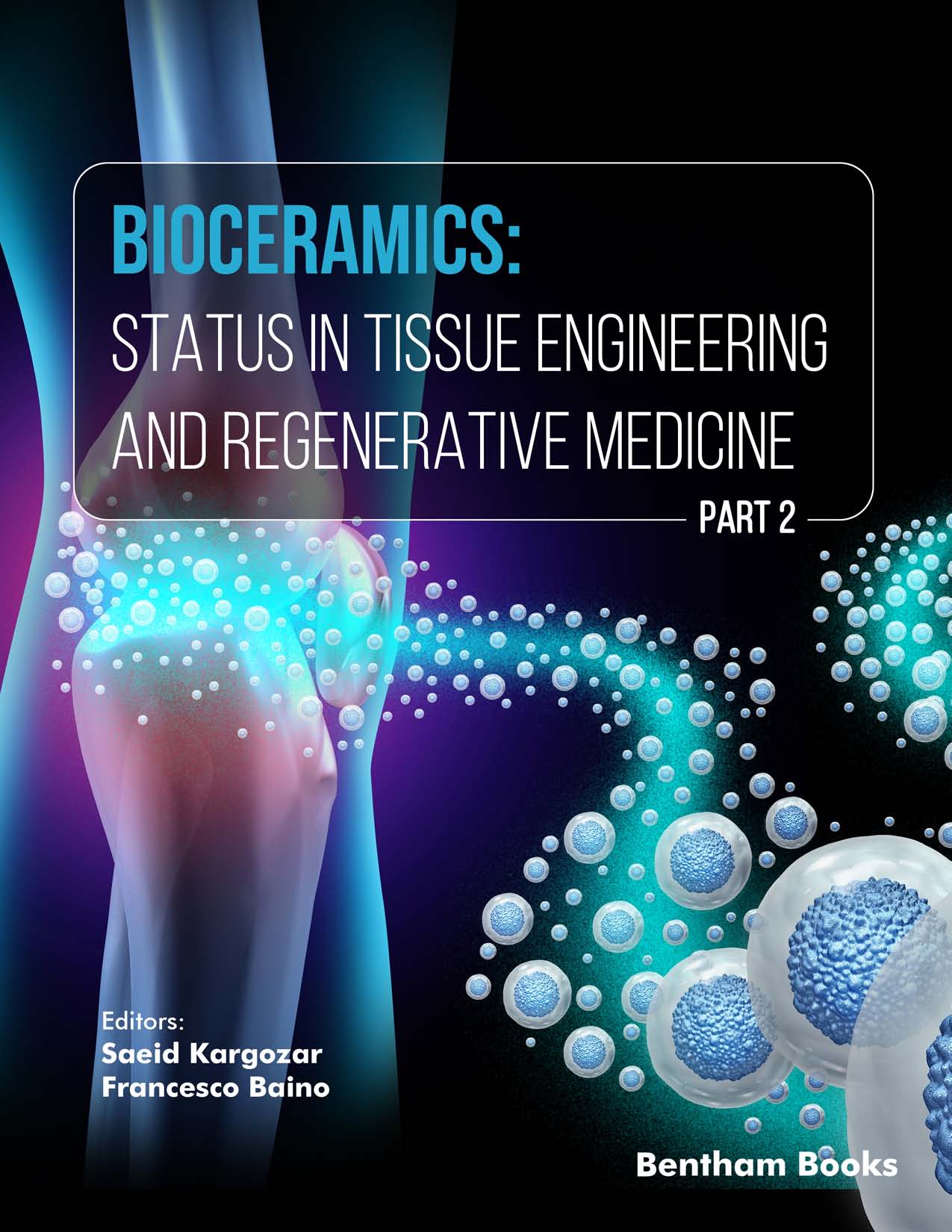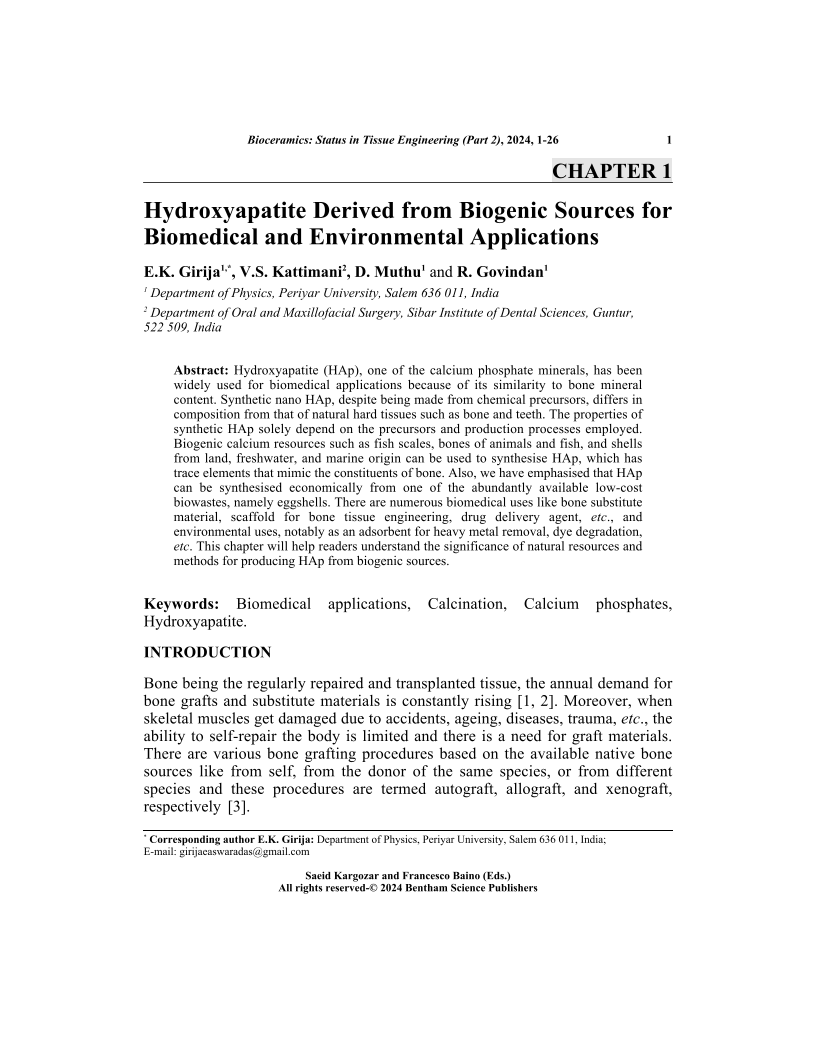Hydroxyapatite Derived from Biogenic Sources for Biomedical and Environmental Applications

- Authors: E. K. Girija1, V. S. Kattimani2, D. Muthu3, R. Govindan4
-
View Affiliations Hide Affiliations1 Department of Physics, Periyar University, Salem 636 011, India 2 Department of Oral and Maxillofacial Surgery, Sibar Institute of Dental Sciences, Guntur, 522 509, India 3 Department of Physics, Periyar University, Salem 636 011, India 4 Department of Physics, Periyar University, Salem 636 011, India
- Source: Bioceramics: Status in Tissue Engineering and Regenerative Medicine (Part 2) , pp 1-26
- Publication Date: December 2024
- Language: English
Hydroxyapatite Derived from Biogenic Sources for Biomedical and Environmental Applications, Page 1 of 1
< Previous page | Next page > /docserver/preview/fulltext/9789815313895/chapter-1-1.gif
Hydroxyapatite (HAp), one of the calcium phosphate minerals, has been widely used for biomedical applications because of its similarity to bone mineral content. Synthetic nano HAp, despite being made from chemical precursors, differs in composition from that of natural hard tissues such as bone and teeth. The properties of synthetic HAp solely depend on the precursors and production processes employed. Biogenic calcium resources such as fish scales, bones of animals and fish, and shells from land, freshwater, and marine origin can be used to synthesise HAp, which has trace elements that mimic the constituents of bone. Also, we have emphasised that HAp can be synthesised economically from one of the abundantly available low-cost biowastes, namely eggshells. There are numerous biomedical uses like bone substitute material, scaffold for bone tissue engineering, drug delivery agent, etc., and environmental uses, notably as an adsorbent for heavy metal removal, dye degradation, etc. This chapter will help readers understand the significance of natural resources and methods for producing HAp from biogenic sources.
-
From This Site
/content/books/9789815313895.chapter-1dcterms_subject,pub_keyword-contentType:Journal -contentType:Figure -contentType:Table -contentType:SupplementaryData105

